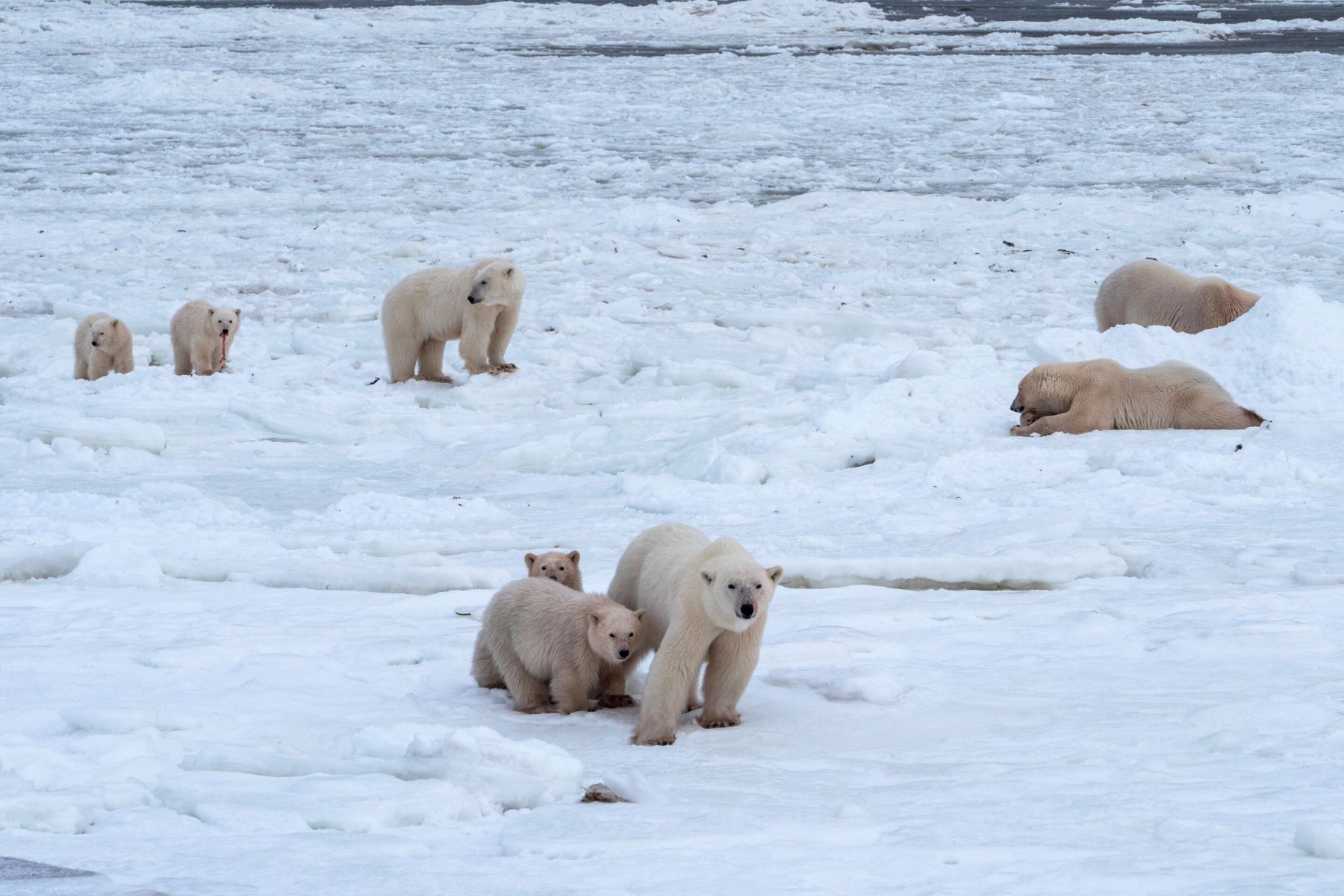
Polar bears are often seen as majestic creatures of the Arctic, but there's a darker side to their survival. Polar bear cannibalism is a real and troubling phenomenon. Why do these powerful predators sometimes turn on their own kind? Climate change plays a significant role, reducing sea ice and making hunting seals, their primary food source, more challenging. As a result, some polar bears resort to cannibalism to survive. This behavior isn't new, but it's becoming more common as their habitat continues to shrink. Understanding the reasons behind this grim reality helps us grasp the broader impacts of a warming planet on Arctic wildlife.
Key Takeaways:
- Polar bears may resort to cannibalism when food is scarce due to climate change. Conservation efforts and global cooperation are crucial to protect these majestic creatures.
- Understanding polar bear behavior and the impact of climate change is essential for their conservation. Their resilience and unique traits make them fascinating creatures to study and protect.
Polar Bears and Cannibalism
Polar bears are fascinating creatures, but their survival tactics can be shocking. Cannibalism among polar bears is a topic that raises eyebrows and curiosity. Here are some intriguing facts about this behavior.
-
Polar bear cannibalism is not a new phenomenon. It has been observed for decades, especially in harsh conditions.
-
Male polar bears are more likely to engage in cannibalism than females. They often target cubs or weaker bears.
-
Cannibalism among polar bears is usually driven by food scarcity. When seals, their primary prey, are hard to find, they may turn on each other.
-
Climate change exacerbates this behavior. Melting ice reduces hunting grounds, making food even scarcer.
-
Polar bear mothers fiercely protect their cubs from potential cannibalistic males. They often hide in dens or stay close to the sea ice.
Reasons Behind Cannibalism
Understanding why polar bears resort to cannibalism helps us grasp the severity of their situation. Here are some reasons behind this behavior.
-
Energy demands are high for polar bears. They need a lot of fat to survive the cold, and when food is scarce, they may turn to cannibalism.
-
Younger bears are more vulnerable. They are often the targets because they are easier to overpower.
-
Cannibalism can be a survival strategy. In extreme conditions, it may be the only way for a bear to stay alive.
-
Territorial disputes can lead to cannibalism. When bears fight over territory, the loser may become the meal.
-
Polar bears have a slow metabolism. This means they can go without food for a long time, but when they do eat, they need high-calorie meals.
Impact of Climate Change
Climate change plays a significant role in the increase of polar bear cannibalism. Here’s how it affects their behavior.
-
Melting ice reduces hunting grounds. Polar bears rely on sea ice to hunt seals, and without it, they struggle to find food.
-
Longer ice-free periods mean longer fasting periods. Bears may go months without a proper meal, increasing the likelihood of cannibalism.
-
Warmer temperatures affect seal populations. With fewer seals available, polar bears have fewer food options.
-
Human activities contribute to habitat loss. Oil drilling and shipping routes disrupt the natural habitat of polar bears.
-
Climate change affects the entire Arctic ecosystem. As the environment changes, so do the behaviors of the animals living there.
Observations and Studies
Scientists have been studying polar bear cannibalism to understand its causes and implications. Here are some findings from their research.
-
Researchers use satellite collars to track polar bears. This helps them observe hunting patterns and instances of cannibalism.
-
Studies show an increase in cannibalism incidents. As the Arctic warms, more cases are being reported.
-
Polar bear populations are declining. Cannibalism is both a cause and a symptom of this decline.
-
Scientists have observed polar bears eating carcasses. This scavenging behavior is becoming more common as food becomes scarce.
-
Research indicates that cannibalism may affect reproduction. Stress and lack of food can lead to lower birth rates.
Conservation Efforts
Efforts are being made to protect polar bears and reduce the instances of cannibalism. Here’s what’s being done.
-
Conservationists are working to preserve sea ice. Protecting their natural habitat is crucial for their survival.
-
International agreements aim to reduce carbon emissions. Slowing climate change can help maintain the Arctic environment.
-
Wildlife organizations monitor polar bear populations. They track health, numbers, and behaviors to better understand their needs.
-
Public awareness campaigns highlight the plight of polar bears. Educating people about the effects of climate change can drive action.
-
Some regions have implemented hunting restrictions. Protecting polar bears from human threats can help stabilize populations.
The Future of Polar Bears
The future of polar bears is uncertain, but understanding their behavior and the challenges they face is the first step toward helping them. Here are some thoughts on what lies ahead.
-
Continued research is essential. Scientists need to keep studying polar bears to find effective conservation strategies.
-
Global cooperation is necessary. Countries must work together to address climate change and protect polar bear habitats.
-
Technological advancements can aid conservation. Drones, satellite imaging, and other tools can help monitor and protect polar bears.
-
Sustainable practices can reduce human impact. Reducing carbon footprints and protecting natural habitats are crucial steps.
-
Polar bears are resilient. Despite the challenges, they have adapted to harsh conditions for thousands of years.
Interesting Facts About Polar Bears
Beyond cannibalism, polar bears have many fascinating traits. Here are some interesting facts about these majestic creatures.
-
Polar bears have black skin. It helps them absorb heat from the sun, keeping them warm in the Arctic cold.
-
Their fur is not actually white. It’s transparent and reflects light, making it appear white.
-
Polar bears are excellent swimmers. They can swim for days at a time, covering long distances in search of food.
-
They have a strong sense of smell. Polar bears can detect seals nearly a mile away and under several feet of compacted snow.
-
Polar bears are solitary animals. They usually live and hunt alone, except for mothers with cubs.
Final Thoughts on Polar Bear Cannibalism
Polar bear cannibalism is a stark reminder of the harsh realities these majestic creatures face. Climate change, shrinking ice habitats, and dwindling food sources push them to desperate measures. Understanding this behavior sheds light on the broader environmental issues impacting polar bears and their survival.
While it’s unsettling, it’s crucial to recognize the role humans play in these changes. Reducing carbon footprints, supporting conservation efforts, and spreading awareness can help mitigate these challenges. Polar bears are resilient, but they need our help to thrive in their natural habitat.
By learning about these behaviors, we can better appreciate the delicate balance of Arctic ecosystems. Let’s use this knowledge to advocate for policies and practices that protect polar bears and their environment. Every small action counts in preserving the future of these incredible animals.
Frequently Asked Questions
Was this page helpful?
Our commitment to delivering trustworthy and engaging content is at the heart of what we do. Each fact on our site is contributed by real users like you, bringing a wealth of diverse insights and information. To ensure the highest standards of accuracy and reliability, our dedicated editors meticulously review each submission. This process guarantees that the facts we share are not only fascinating but also credible. Trust in our commitment to quality and authenticity as you explore and learn with us.


